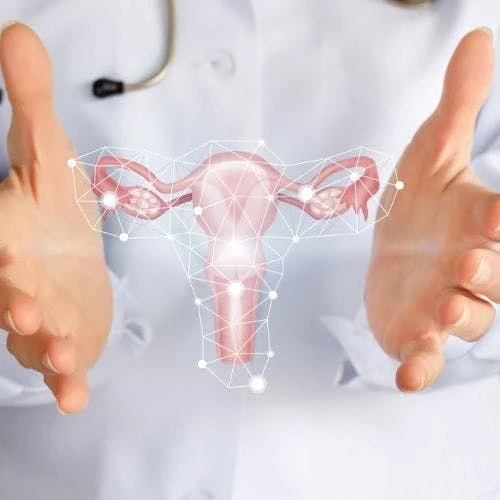Miscarriage Stages, Types, Symptoms, And Treatment
Miscarriage is a term used to describe the loss of a pregnancy before the 20th week. The stages of a miscarriage can vary depending on the individual case. On average, the risk of miscarriage is approximately 10-20% for all clinically recognized pregnancies. However, the risk can vary depending on the stage of pregnancy. For example, the risk of miscarriage in the first trimester is higher, with up to 80% of all miscarriages occurring in the first 3 months of pregnancy (first 12 weeks or first trimester of pregnancy).
The second trimester of pregnancy typically begins at week 13 and lasts through week 28. Early pregnancy loss refers to a miscarriage in the first trimester or before week 20. Pregnancy loss after week 20 of gestation is known as a stillbirth. A stillbirth is the loss of a fetus after the 20th week of pregnancy, before the baby is born. The causes of stillbirth can vary and may include problems with the placenta, genetic abnormalities, infections, and chronic medical conditions such as diabetes or high blood pressure.
Stages Of Miscarriage: Threatened Miscarriage
A threatened miscarriage refers to vaginal bleeding or vaginal spotting that occurs during the first 20 weeks of pregnancy, without the loss of the pregnancy. Other symptoms of a miscarriage may include mild to moderate cramping, backache or abdominal pain, and a feeling of heaviness in the pelvis.
The bleeding may range from light spotting to heavy bleeding and can be caused by a number of factors, such as hormonal changes, infections, or cervical irritation. In some cases, a threatened miscarriage may progress to an actual miscarriage, but in many cases, the pregnancy can continue normally.
If you experience any symptoms of a threatened miscarriage, it is important to contact your healthcare provider immediately. They can perform a physical exam, ultrasound, and blood tests to determine the cause of the bleeding and provide appropriate treatment or recommendations to help you manage your symptoms and monitor your pregnancy.
About half of women with threatened miscarriages go on to have a successful pregnancy. Doctors will usually recommend expectant management and rest to help the pregnancy progress.
Stages Of Miscarriage: Inevitable Miscarriage
An inevitable miscarriage is a stage of miscarriage that occurs when the cervix begins to dilate and the pregnancy cannot be saved. This means that the woman will experience the loss of the pregnancy, even if it has not yet passed from the uterus.
Symptoms of an inevitable miscarriage may include vaginal bleeding, which can range from light spotting to heavy bleeding, and cramping, which can be mild to severe. The bleeding and cramping may become more intense as the pregnancy tissue begins to pass from the uterus.
If you experience symptoms of an inevitable miscarriage, it is important to seek medical attention as soon as possible. Your healthcare provider can perform an ultrasound to confirm the loss of the pregnancy and provide appropriate treatment options. These may include medication to help expel the pregnancy tissue or a surgical procedure called a dilation and curettage (D&C) to remove the tissue.
Stages Of Miscarriage: Incomplete Miscarriage
An incomplete miscarriage occurs when some of the pregnancy tissue remains in the uterus after a pregnancy loss. This can occur when the cervix is partially dilated and some tissue has been expelled, but not all of it.
Symptoms of an incomplete miscarriage may include heavy vaginal bleeding, severe cramping, and the passing of large blood clots. Additionally, the woman may experience other signs of pregnancy loss such as a decrease in pregnancy-related symptoms or a negative pregnancy test.
If you suspect that you may be experiencing an incomplete miscarriage, it is important to seek medical attention as soon as possible. Your healthcare provider can perform an ultrasound to determine if any tissue remains in the uterus and recommend appropriate treatment options. Treatment may include medication to help the body expel the remaining tissue or a surgical procedure called a dilation and curettage (D&C) to remove the tissue.
It is important to receive prompt treatment for an incomplete miscarriage to reduce the risk of infection and other complications.
Stages Of Miscarriage: Complete Miscarriage
A complete miscarriage occurs when all of the fetal tissue has been expelled from the uterus. This means that the woman has experienced the loss of the pregnancy and no further medical intervention is needed.
Symptoms of a complete miscarriage may include heavy vaginal bleeding, severe cramping, and the passing of large blood clots or pregnancy tissue. The bleeding and cramping may continue for several days, but should gradually improve over time.
After a complete miscarriage, it is important to monitor any symptoms of infection, such as fever, chills, or foul-smelling discharge, and to attend any recommended follow-up appointments with your healthcare provider. Additionally, it is important to take time to care for yourself emotionally during this difficult time. Seek support from loved ones, an organized support group, or a mental health professional if needed.
Stages Of Miscarriage: Missed Miscarriage
A missed miscarriage, also known as a silent miscarriage or a missed abortion, occurs when the pregnancy has ended, but the body has not yet expelled the tissue. In this type of miscarriage, the pregnancy has stopped developing, but the woman may not have any miscarriage symptoms.
A missed miscarriage is usually diagnosed during a routine prenatal checkup or ultrasound, where the healthcare provider may detect that the fetal heartbeat has stopped, or that the fetus is not growing as expected. However, the woman may not have any symptoms, or she may continue to experience symptoms of pregnancy, such as breast tenderness or nausea, even though the pregnancy has ended.
Treatment for a missed miscarriage typically involves a procedure to remove the tissue from the uterus. This may be done using medication to induce contractions or a surgical procedure called a dilation and curettage (D&C).
Related: Is My Vagina Normal? Plus A Female Anatomy Chart
Recurrent Miscarriage
Recurrent miscarriage is defined as the loss of three or more consecutive pregnancies before the 20th week of gestation. It is a relatively rare occurrence, affecting approximately 1-2% of all couples trying to conceive.
The causes of recurrent miscarriage can vary and may include genetic factors, hormonal imbalances, uterine or cervical abnormalities, autoimmune disorders, infections, and lifestyle factors such as smoking and excessive alcohol consumption. In many cases, the cause of recurrent miscarriage is unknown.
If you have experienced recurrent miscarriage, it is important to seek medical attention from a specialist in reproductive medicine. Your healthcare provider may recommend a variety of tests and treatments, depending on the suspected cause of the recurrent miscarriage. A complete evaluation can help to increase the chances that the next pregnancy is a healthy pregnancy. Treatment options may include hormone therapy, surgical intervention to correct uterine or cervical abnormalities, or in vitro fertilization (IVF) with preimplantation genetic testing (PGT) to screen for genetic abnormalities.
Molar Pregnancy
A molar pregnancy is a rare type of pregnancy in which the fertilized egg develops into a tumor instead of a normal pregnancy. The tumor, called a mole, is made up of abnormal tissue and can grow rapidly in the uterus. Though this is not technically a miscarriage, this is not a viable pregnancy and will need surgical management.
There are two types of molar pregnancies: complete and partial. In a complete molar pregnancy, the fertilized egg has no genetic material from the mother, and the tumor is made up entirely of abnormal placental tissue. In a partial molar pregnancy, the fertilized egg has genetic material from both the mother and father, but the embryo does not develop properly, and the tumor is made up of both abnormal placental tissue and fetal tissue.
Symptoms of a molar pregnancy may include vaginal bleeding, an abnormally large uterus, and elevated levels of pregnancy hormones. However, some women may not have any symptoms, and the molar pregnancy may be diagnosed during a routine prenatal ultrasound.
Treatment for a molar pregnancy typically involves a procedure to remove the tumor from the uterus. After the procedure, close monitoring and follow-up care are needed to ensure that the tumor does not grow back and to monitor for any signs of cancer.
Ectopic Pregnancy
An ectopic pregnancy is a type of pregnancy that occurs when a fertilized egg implants outside of the uterus, typically in the fallopian tube. In rare cases, an ectopic pregnancy can also occur in the ovary, cervix, or abdominal cavity.
Symptoms of an ectopic pregnancy may include vaginal bleeding, abdominal or pelvic pain, and shoulder pain. However, some women may not have any symptoms, and the ectopic pregnancy may be diagnosed during a routine ultrasound or prenatal visit.
Ectopic pregnancies are a medical emergency and require immediate treatment. If left untreated, an ectopic pregnancy can cause severe internal bleeding and damage to the fallopian tube or other organs.
Treatment for an ectopic pregnancy typically involves a procedure to remove the pregnancy tissue. In some cases, medical management with prescription medication may be used to stop the growth of the pregnancy tissue and allow the body to absorb it naturally. If the ectopic pregnancy has caused significant damage to the fallopian tube, surgery may be needed to remove the affected tissue and repair any damage.
Risk Factors For Miscarriage
There are several factors that may increase the risk of miscarriage. Advanced maternal age is one of them. Women over the age of 35 have a higher risk of miscarriage than younger women. Also, women who have had one or more previous miscarriages are at an increased risk for future miscarriages. Certain chronic medical conditions, such as diabetes, thyroid disorders, and autoimmune disorders, may increase the risk of miscarriage. Infections such as rubella, cytomegalovirus, and toxoplasmosis can increase the risk of miscarriage. Structural abnormalities of the uterus or cervix, such as fibroids or an incompetent cervix, can increase the risk of miscarriage. Smoking, drug use, and excessive alcohol consumption have been linked to an increased risk of miscarriage. Exposure to certain environmental toxins, such as lead, mercury, and pesticides, can increase the risk of miscarriage
The most common cause of miscarriage is having chromosome problems in the embryo. It is important to note that in many cases, the cause of a miscarriage is unknown and cannot be prevented. However, taking steps to maintain a healthy lifestyle, seeking regular prenatal care, and addressing any chronic medical conditions may help reduce the risk of miscarriage.
Polycystic Ovary Syndrome And Miscarriage Risk
Women with polycystic ovary syndrome (PCOS) may be at an increased risk for miscarriage compared to women without PCOS. The exact reason for this increased risk is not entirely understood, but it is thought to be related to hormonal imbalances associated with PCOS.
PCOS is a hormonal disorder that can cause a range of symptoms, including irregular periods, difficulty getting pregnant, and an increased risk of developing gestational diabetes, pre-eclampsia, and other pregnancy complications.
Women with PCOS who are trying to conceive may be advised to seek medical attention from a specialist in reproductive medicine. Your healthcare provider may recommend fertility treatments, such as ovulation induction or in vitro fertilization (IVF), to increase the chances of a successful pregnancy.
Stages Of Miscarriage
There are stages to a miscarriage and they may have varying symptoms. Symptoms of miscarriage usually correlate with the stage. The types of miscarriage include threatened miscarriage, inevitable miscarriage, incomplete miscarriage, complete miscarriage, and missed miscarriage. The loss of a baby after 20 weeks is referred to as a stillbirth rather than a miscarriage. While ectopic pregnancy and molar pregnancy are not technically a miscarriage, they are not viable pregnancies and they will not result in the live birth of a child. Miscarriage can be an extremely devasting thing to go through. It is important to take care of yourself emotionally and mentally and seek support if you need it.
We discuss products we think are useful to people. If you buy something through our links, we may earn a commission. Remember to check with your personal physician to see if a product recommended is right for you.








